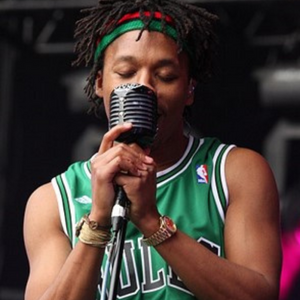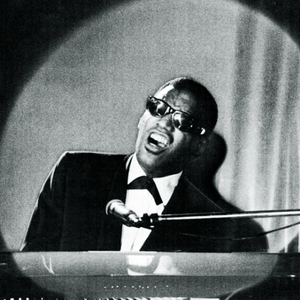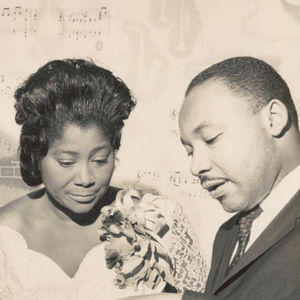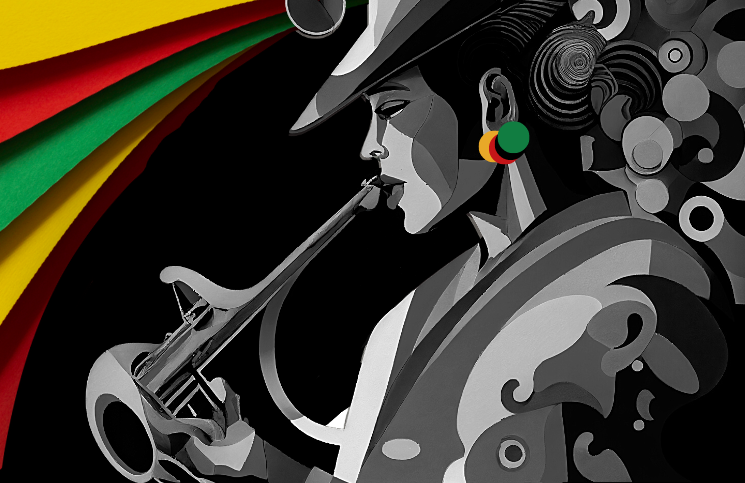The Legacies of Lupe Fiasco, Mahalia Jackson and Ray Charles
by Joan Reissman
Last week we featured three Black musicians who blended genres: Sister Rosetta Tharpe, Marian Anderson and Charles Mingus. This week we explore three more musicians: Lupe Fiasco, Ray Charles and Mahalia Jackson, all of whom created influential legacies. Lupe Fiasco is an American rapper, songwriter, and record producer known for his socially conscious lyrics and distinctive style. Ray Charles was an American pianist, singer, and composer known as the “Genius.” A pioneer of soul music, he blended gospel, R&B and jazz. Mahalia Jackson was an American gospel singer known as the Queen of Gospel and a key figure in the Civil Rights Movement.
Lupe Fiasco

How many rappers use a trigonometry term in their lyrics? (“don’t sine” in Dots and Lines-Tetsuo & Youth). And how many rappers become visiting professors at MIT? That’s just a glimpse of Lupe Fiasco’s accomplishments.
Lupe Fiasco was born in Chicago (real name Wasalu Muhammad Jaco) and some say he is responsible for putting Chicago hip-hop on the map.
Think of Chance the Rapper, Juice Wrld and Vic Mensa, just to name a few. His father was an engineer and his mother was a chef. Like Lupe, his father did many things including drumming, karate and involvement with the Black Panther party. Lupe is not only known for rap, but also for producing, business ventures, community development and social activism. He has a devoted following (including me), and his fans eagerly anticipate his releases. He is known for politically charged lyrics, using his music as a vehicle for social critique and activism.
Lupe got his first break in 2005 singing on a Kanye West song, Touch the Sky. In 2006 he released his own first album, Songs About Liquor and Food. Jay-Z was the executive producer. Lupe’s socially conscious lyrics and political messages were highly unusual for rap at the time. Not everything he writes is about politics–some of his works fit the pop mould. He has been a key player in lyric annotation and has helped establish sites such as Rap Genius where fans can read about the meaning of lyrics. Lupe recognizes the appeal of this duality1: “You can…sit up there all day and just hit you with the same basic terminology — no metaphors, no similes, no references, no outside meanings, no entendre, no layered wordplay…. It doesn’t educate you, it doesn’t build you up, it doesn’t get your mind to think. But you like the beat, the melodies, the way they’re saying it. All these complex top lines and these dips of intonation and pitch, that’s engaging to you… You may not get half of it, but there’s somebody else who’s going to get the other half… Hopefully, you will connect with that other person and then they’ll give you their half.” At a Lupe concert some fans clamor to hear the lighter pieces like The Show Goes On but there’s always a mix of songs with dense lyrics and social messages, such as Freedom Ain’t Free, which talks about many social issues including unnecessary consumerism (If you ain’t know, you’re part and parcel of the problem-You say no you ain’t, and I say yes you is-Soon as you find out what planned obsolescence is).
One of the hallmarks of Lupe’s work is creating a life for people who never had the chance to grow up. On Drogas Wave there are two songs that depict an imaginary life for people who were killed at a very early age: Jonylah Watkins (killed at 6 months by a bullet meant for her father) and Alan Kurdi (drowned at 3 as his family tried to escape Syria). Lupe gave them the “opportunity ” to live through his imagination. In these songs they both grow up to have successful careers{ Jonylah as a doctor and Alan as a champion swimmer. Lupe explores their imaginary lives and gives Jonylah a chance to save someone who has been shot while Alan rescues someone from drowning. They are “giving” someone the chance to live the lives they never had.
Lupe is also a business owner, a philanthropist, and he is currently teaching a course at MIT. He has launched a clothing line, a record label and designed sneakers for Reebok. He fosters community development by supporting local organizations that empower youth. His career has not been without controversy. He has had feuds with other rappers and has been criticized for lyrics that some groups found offensive. He has been an influential figure in the music industry since his debut in 2006, and will always be known for his social critiques and thoughtful lyrics.
1 https://www.vulture.com/2020/08/lupe-fiasco-interview-kaelin-ellis-joe-budden-virgil-abloh.htm
Image source: Lupe Fiasco performance at Sydney, Australia in 2012. This image is licensed under the Creative Commons Attribution-Share Alike 2.0 Generic license.
Ray Charles

Ray Charles is one of the key figures in American popular music. His long and successful career has made his music familiar to listeners all over America and the world. We wouldn’t have soul music today without his talent and unique style.
Ray was born Ray Charles Robinson in 1930 in Albany, Georgia. His parents were Bailey (a laborer) and Aretha (a laundress).
Bailey abandoned the family and remarried. Ray remained devoted to his mother and often credited her with helping him build the strength and drive that was essential to his success.
A family friend introduced Ray to the piano when he was three and still had his sight. The boy immediately took to the instrument. “I was born with music inside me,” he said, “and from the moment I learned there were piano keys to be mashed, I started mashing ‘em, trying to make sounds out of feelings”1. Although Ray knew he was loved by the women who raised him, he did not have an easy life. His brother George accidentally drowned when Ray was five years old. Ray tried to save him, but could not lift him out of the tub. Shortly after George’s death, Ray began to lose his vision, probably from untreated glaucoma. He had lost sight in both eyes by age seven. He said his mother helped him learn to live without sight. She made him do chores like any other boy and Ray learned to be independent through her guidance.
Ray’s mother was also very influential in guiding him towards a music career. She helped him get accepted at Florida State School for the Deaf and the Blind. Although the school was segregated, Charles learned a lot about music during his eight years there. He learned how to read Braille music, which is very difficult. He received exposure to many types of music, which probably contributed to his easy genre melding in later years. He learned how to play the piano, saxophone and clarinet.
When Charles’s mother died in 1945, he left school and moved. Although he was devastated by her death, a family friend convinced him that his mother would have wanted him to pursue a musical career. He stayed in Florida for a couple of years and then moved to Seattle at age 17. He thought New York and Chicago might be too big for a young small-town boy. In Seattle his musical career took off. Seattle had a lively music scene and Charles joined a trio. He began playing regularly and released his first recordings. At first he sang in the style of Nat King Cole, but he soon developed his own style. He had his first national hits, “Confession Blues” and “I Love You I Love You” in 1949. “Confession Blues” reached the number two spot on Billboard’s R&B chart. Based on the success of these songs, the trio’s record producer took them to Los Angeles.
During the fifties, Charles continued to refine his genre-bending style and released many hits. After he signed with Atlantic Records, he released one of his greatest hits, “I’ve Got a Woman. ” This song marked the beginning of the signature Ray Charles style with its blending of blues, gospel and jazz. Ray also added another signature element in the 1950s: his backup singers, the Raelettes. The Raelettes added a gospel call and response element. His string of hits and crossover appeal cemented his legacy.
Like Rosetta Tharpe and Marian Anderson, Ray Charles had to stay in segregated rooming houses and get food from the back doors of restaurants. But Ray Charles sometimes took a stand and refused to play for segregated audiences. In 1961 he was scheduled to play in Augusta, Georgia. When he learned that Black people would only be allowed to sit in the balcony while white people would sit downstairs, he announced that he would not play. He explained his decision to the media, but the promoter wasn’t satisfied. Charles was sued for breach of contract, and he was fined. Two years later he played in the same auditorium for a desegregated audience.
Did Ray Charles invent the word soul? There’s no agreement on that issue. However, what we know is that Ray Charles was a pioneer whose blend of blues, jazz and gospel came to define a sound that was carried on by great soul singers such as Otis Redding, and Aretha Franklin, among many others. Ray’s many hits such as “What’d I Say,” “Unchain My Heart,” “Hit the Road Jack” and a list too long to recite distinguish his long career. Charles also explored other genres with country and western hits such as “Georgia on My Mind” and “I Can’t Stop Loving You.” He even released a cover of the Beatles’ “Eleanor Rigby” in 1968.
His personal life was complex. He was difficult and demanding. He held his band members to a high standard and was frequently harshly critical. He had problems with drugs and women. He married twice and fathered 12 children. Yet he continued to produce a succession of hits for many decades.
Ray Charles saw his life as an example of what anyone can accomplish. “I would like people to know that you can recover from a lot of adversity that you might have in your life if you keep pressing on,” he told an interviewer.
“In other words, you don’t give up just because you get knocked down a few times”.2
He proved that hard work and determination combined with talent can lead to success. Despite his early adversity, Ray Charles had a five-decade career, won 18 Grammys and was inducted into the Grammy and Rock & Roll Hall of Fame. His style and his innovations will continue to inspire musicians for many generations.
1 https://www.historylink.org/file/5707
2 https://www.historylink.org/file/5707
Image source: 11/4/1967, Billboard, page 29. This advertisement (or image from an advertisement) is in the public domain because it was published in a collective work (such as a periodical issue) in the United States between 1928 and 1977 and without a copyright notice specific to the advertisement.
Mahalia Jackson

Mahalia Jackson was an American gospel singer and civil rights activist. Born in New Orleans in 1911, she became known as the “Queen of Gospel.” Jackson’s powerful voice and passionate performances made her one of the most influential gospel singers of the 20th century. Her music continues to inspire people around the world.
Mahalia grew up in a shotgun shack that she shared with 12 other people.
Both her maternal and paternal grandparents were born into slavery. She began singing at the Plymouth Rock Baptist Church at age 4. Her family only allowed her to listen to religious music, but she managed to listen secretly to Bessie Smith and Ma Rainey. Next door was a Pentecostal Church and Mahalia listened to their spirited music as a child. This early exposure is partially responsible for her more raucous style that veered from traditional gospel. Mahalia’s mother died when she was 5, so she moved in with her Aunt Duke. Economic circumstances forced Mahalia to drop out of school at age 10.
At 16 Mahalia moved to Chicago with her aunt. Like many other Black people at the time, Mahalia and her aunt hoped for more opportunity in a northern city. Although Mahalia had to take several low-paying jobs, music found her. She joined the Greater Salem Baptist Church which had a gospel group, the Johnson Gospel Singers. Then she met Thomas A. Dorsey and performed with him in many cities across the United States during the thirties and forties. She had several hits. Her first big hit, “Move Up a Little Higher,” was in 1945. This song used repeated phrases (vamps) which provided a musical foundation for solo spots. The song became the biggest selling single in gospel history.1
Unlike Rosetta Tharpe, Mahalia Jackson followed a more conservative path. Although her songs mixed elements of blues with gospel themes, she remained deeply committed to gospel. She would sing only gospel songs (such as “Only a Little While to Stay Here. When I Wake Up in Glory”) and she would play only in venues that she thought were appropriate for a gospel singer. She lost one of her early contracts with Decca records because she refused to record any blues songs.
Mahalia’s commercial success opened more opportunities for her. She toured extensively and made many radio and television appearances. In 1950 she performed at Carnegie Hall to an integrated audience. During the fifties she toured Europe, appeared on the Ed Sullivan Show, and performed at the Newport Jazz Festival. During this time, she also signed a contract with Columbia Records. She was the first Black gospel singer to sign with a major label. She made 30 albums with Columbia.
Although Mahalia was highly successful, she still had to endure racism. Like many other Black musicians, she had to stay in segregated rooming houses and go to the back door of a restaurant to get food. When she bought a house in a suburb of Chicago, she received death threats from people who did not want her as a neighbor.
These experiences guided Mahalia to the Civil Rights movement. Civil Rights leaders relied on her providing financial support and energizing rallies with her dynamic voice.
A key moment in Mahalia Jackson’s Civil Rights involvement happened in 1956. It was the first anniversary of Rosa Parks’s refusal to give up her bus seat. Reverend Ralph Abernathy invited Mahalia to sing at a commemorative event in Alabama. Braving threats and Klansmen, she arrived in Montgomery. Here she met the young Dr. Martin Luther King, Jr. Mahalia found King’s speeches inspiring and they became good friends. King had Mahalia sing at many of his rallies and sometimes he even called her to sing to him when he couldn’t sleep.
Mahalia inspired Dr. King to deliver his most famous speech, “I Have a Dream.” King gave this address during the second March on Washington in 1963. Some 250,000 people were in the audience and millions more were watching on television. King and his staff knew this speech was important. They debated over the themes and how they would be expressed. According to Clarence Jones, an advisor and speechwriter, King’s advisers debated about the speech’s purpose. Some felt that the speech should be more like an uplifting sermon, but others felt it should be more of a guiding light with inspiration for the direction people should take. The staff had been debating between two themes: the bad check and the dream. They decided to be more low-key since King was delivering a speech to millions of people on controversial issues.
According to Clarence Jones, King began with the more moderate delivery. But Mahalia Jackson, standing behind him, yelled out “Tell them about the dream, Martin” and King shoved his notes aside and started improvising. He spoke about his vision– his dream. This is how we know the speech today. We’ll never know what prompted Mahalia to tell King to change direction, but her urging helped him produce his most famous speech, an oration that inspired millions and still inspires today. Jones says he turned to the person next to him and said, “These people out there, they don’t know it, but they’re about ready to go to church.”2
Mahalia began to battle age and illness in the mid-1960s. Although she continued touring, she stopped her political activities. She kept touring even though her doctors told her she needed to rest. She traveled all over the world and performed long concerts, which pleased audiences but strained her declining health. In addition to the tours, she developed two organizations, one that sent people to college and a temple where people of any faith could learn gospel music. She even partnered with comedian Minnie Pearl to develop a restaurant chain. Mahalia continued touring until she was forced to cut the tour short and fly home because of health problems. She had surgery but didn’t recover.
Mahalia Jackson was a leader and an innovator. She helped bring gospel music to people all over the world. Although she incorporated elements from other genres in her music, she remained true to her personal pledge: that she would sing only songs with spiritual content. Not only did she have a significant influence on gospel music, but she was an important part of the Civil Rights movement. As Jesse Jackson said, “She put her career and faith on the line, and both of them prevailed”.3
In these past two weeks we have highlighted 6 Black musicians: Sister Rosetta Tharpe, Marian Anderson, Charles Mingus, Lupe Fiasco, Ray Charles and Mahalia Jackson. These six are just a few examples of the numerous Black artists who have made an impact and left a lasting legacy in the world of music. Despite their different eras, genres and styles, they all faced adversity and struggled to use their voices on their own terms. Musical history is much richer because these musicians persevered.
1 https://www.history.com/this-day-in-history/mahalia-jackson-the-queen-of-gospel-puts-her-stamp-on-the-march-on-washington
2 https://www.vox.com/2016/1/18/10785882/martin-luther-king-dream-mahalia-jackson
3 https://www.npr.org/templates/story/story.php?storyId=123498527
Image source: Mahalia Jackson and Dr. Martin Luther King Jr., from the Collection of the Smithsonian National Museum of African American History and Culture, Gift of Paul & Claire Blumenfeld, circa 1960. (cropped)
Joan Reissman is a Learning Specialist with JFYNetWorks.
Other posts authored by Joan can be found here.
HOW ARE WE DOING? In our pursuit to serve up content that matters to you, we ask that you take a couple of minutes to let us know how we’re doing? Please click here to be navigated to our JFYNet Satisfaction Survey. Thank you!





